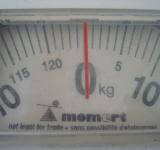Physical Education (PE) has great potential for helping to control overweight-but only if it is implemented AND actually engages students in ample amounts of physical activity. Unfortunately, very few states even report how many minutes of physical education are required in schools. PE is rarely scheduled daily and even when scheduled is often not held (about 20% of lessons are cancelled for various reasons-no substitute for PE teacher; gym not available; academic testing during PE time). When held as scheduled, actual PE length is only about 78% of the time scheduled for it. Clearly there is an obvious need for additional and more specific PE policies at many levels (state, district, school) together with consequences for not following them.

Meanwhile, the quality of PE is not uniformly optimal, and this got us thinking: If schools actually met the Society of Health and Physical Educator’s (SHAPE America) and the Institute of Medicine’s (IOM) recommendations for quality PE, how much could PE contribute to caloric expenditure and the potential for controlling for overweight and obesity?
Presently, we really don’t know much about this because we often talk in units (METs, % MVPA [moderate-to-vigorous physical activity]) that don’t translate well to students, parents, principals, school boards, and other stakeholders. Incorporating calories into the conversation may transform how PE is viewed. To start this question we needed data, and we did this in a recently published article, The Potential and Reality of Physical Education in Controlling Overweight and Obesity (Kahan & McKenzie, 2015).